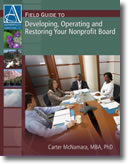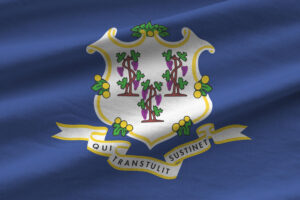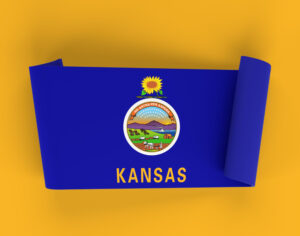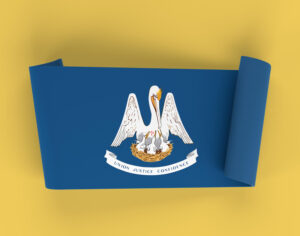Typical Types of Board Committees
© Copyright Carter McNamara, MBA, PhD, Authenticity Consulting, LLC. Also see Carter’s Board Blog (for for-profits and nonprofits).
Sections of This Topic Include
- About Committees
- Developing Committees
- Potential Standing Committees and Their Roles
- Potential Ad Hoc Committees
Learn More in the Library’s Blogs Related to Board Committees
In addition to the articles on this current page, also see the following blogs that have posts related to Board Committees. Scan down the blog’s page to see various posts. Also see the section “Recent Blog Posts” in the sidebar of the blog or click on “next” near the bottom of a post in the blog. The blog also links to numerous free related resources.
The following descriptions are intended to portray various functions that are often conducted by board committees. Note that the following list is not intended to suggest that all of these committees exist within one organization; it’s ultimately up to the organization to determine which committees should exist and what they should do for that organization. Committees and their assignments are often specified in the ByLaws. Some of the following information has been adapted from materials by BoardSource, but applies to for-profit and nonprofit boards unless otherwise noted.
About Committees
1. Establish committees when it’s apparent that issues are too complex and/or numerous to be handled by the entire board.
2. For ongoing, major activities establish standing committees; for short-term activities, establish ad hoc committees that cease when the activities are completed. Standing committees should be included in the by-laws.
3. Committees recommend policy for approval by the entire board.
4. Committees make full use of board members’ expertise, time and commitment, and ensure diversity of opinions on the board.
5. They do not supplant responsibility of each board member; they operate at the board level and not the staff level.
6. Committees may meet monthly (this is typical to new organizations, with working boards), every two months, or every three months; if meetings are not held monthly, attempt to have committees meet during the months between full board meetings.
7. Minutes should be recorded for all board meetings and for Executive Committee meetings if the ByLaws indicate the Executive Committee can make decisions in place of the board when needed.
Developing Committees
1. Ensure the committee has a specific charge or set of tasks to address, and ensure board members understand the committee’s charge
2. Have at least two board members on each committee, preferably three
3. Don’t have a member on more than two committees
4. In each board meeting, have each committee chair report the committee’s work since the past board meeting
5. Consider having non-board volunteers as members of the committee (mostly common to nonprofits)
6. Consider having a relevant staff member as a member of the committee as well
7. Committee chairs are often appointed by the board chair; consider asking committees members for a volunteer for committee chair
8. If committee work is regularly effective and the executive committee has a strong relationship with the chief executive, consider having board meetings every other month and committee meetings between the board meeting
9. The chief executive should service ex officio to the board and any relevant committees (some organizations might consider placing the chief executive as a member of the board — this decision should be made very carefully)
Potential Standing Committees
The following descriptions are intended to portray various functions often conducted by standing board committees, i.e., committees that exist year round. Note that the following list is not intended to suggest that all of these committees should exist; it’s ultimately up to the organization to determine which committees should exist and what they should do.
|
Potential Standing Committees |
Their Typical Roles |
| Board Development | Ensure effective board processes, structures and roles, including retreat planning, committee development, and board evaluation; sometimes includes role of nominating committee, such as keeping list of potential board members, orientation and training |
| Evaluation | Ensures sound evaluation of products/services/programs, including, e.g., outcomes, goals, data, analysis and resulting adjustments |
| Executive | Oversee operations of the board; often acts on behalf of the board during on-demand activities that occur between meetings, and these acts are later presented for full board review; comprised of board chair, other officers and/or committee chairs (or sometimes just the officers, although this might be too small); often performs evaluation of chief executive |
| Finance | Oversees development of the budget; ensures accurate tracking/monitoring/accountability for funds; ensures adequate financial controls; often led by the board treasurer; reviews major grants and associated terms |
| Fundraising | Oversees development and implementation of the Fundraising Plan; identifies and solicits funds from external sources of support, working with the Development Officer if available; sometimes called Development Committee |
| Marketing | Oversees development and implementation of the Marketing Plan, including identifying potential markets, their needs, how to meet those needs with products/services/programs, and how to promote/sell the programs |
| Personnel | Guides development, review and authorization of personnel policies and procedures; sometimes leads evaluation of the chief Executive; sometimes assists chief executive with leadership and management matters |
| Product / Program Development | Guides development of service delivery mechanisms; may include evaluation of the services; link between the board and the staff on program’s activities |
| Promotions and Sales | Promotes organization’s services to the community, including generating fees for those services |
| Public Relations | Represents the organization to the community; enhances the organization’s image, including communications with the press |
Potential Ad Hoc Committees
The following descriptions are intended to portray various functions often conducted by ad hoc board committees, i.e., committees that exist to accomplish a goal and then cease to exist. Note that the following list is not intended to suggest that all of these committees should exist; it’s ultimately up to the organization to determine which committees should exist and what they should do.
| Audit | Plans and supports audit of a major functions, e.g., finances, programs or organization |
| Campaign (nonprofit) | Plans and coordinates major fundraising event; sometimes a subcommittee of the Fundraising Committee |
| Ethics | Develops and applies guidelines for ensuring ethical behavior and resolving ethical conflicts |
| Events (or Programs) | Plans and coordinates major events, such as fundraising (nonprofits), team-building or planning; sometimes a subcommittee of the Fundraising Committee |
| Nominations | Identifies needed board member skills, suggests potential members and orients new members; sometimes a subcommittee of the Board Development Committee |
| Research | Conducts specific research and/or data gathering to make decisions about a current major function in the organization |
Return to All About Boards of Directors
For the Category of Boards of Directors:
To round out your knowledge of this Library topic, you may want to review some related topics, available from the link below. Each of the related topics includes free, online resources.
Also, scan the Recommended Books listed below. They have been selected for their relevance and highly practical nature.
 Sections of this topic
Sections of this topic















